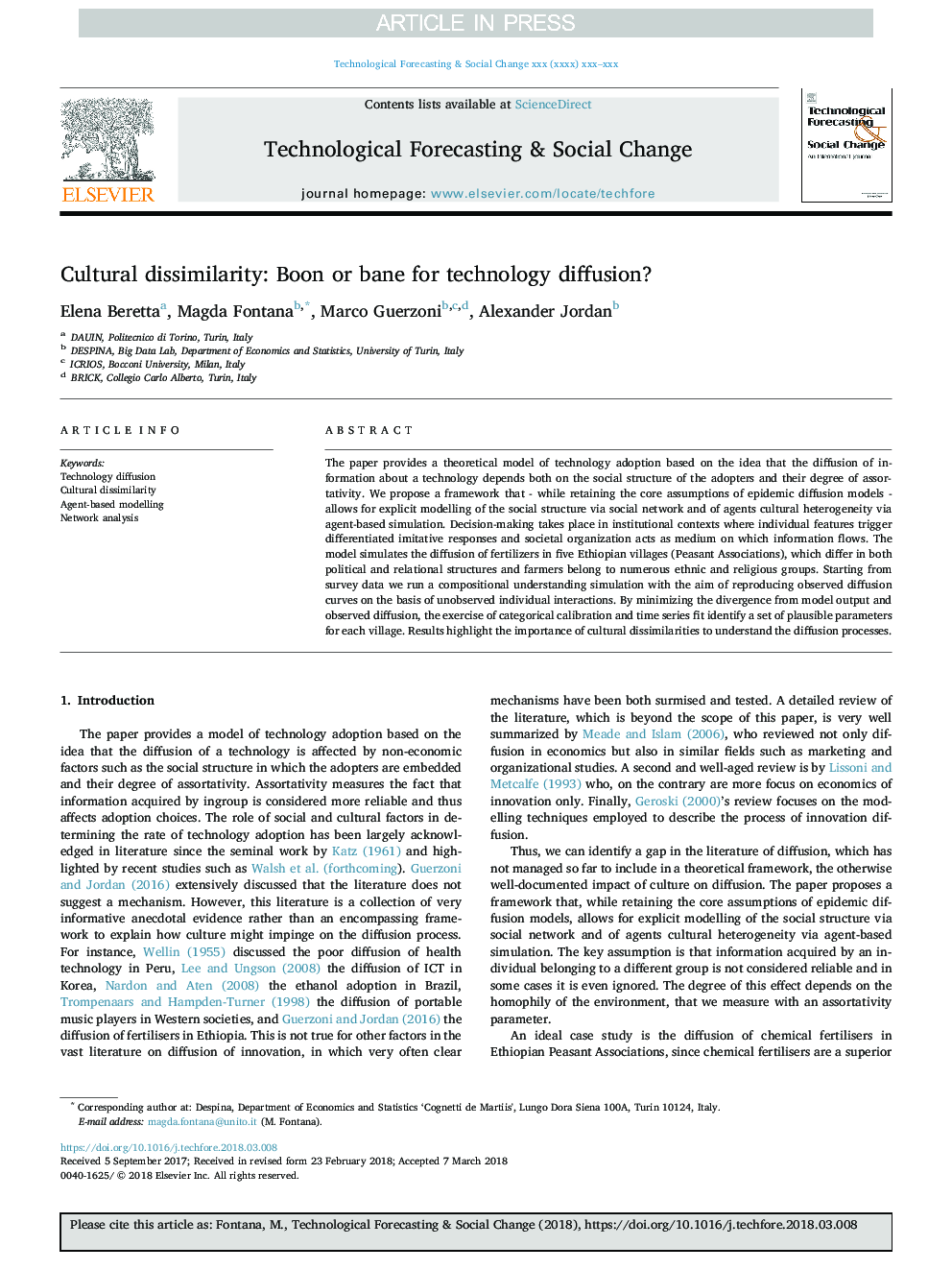| Article ID | Journal | Published Year | Pages | File Type |
|---|---|---|---|---|
| 7255203 | Technological Forecasting and Social Change | 2018 | 9 Pages |
Abstract
The paper provides a theoretical model of technology adoption based on the idea that the diffusion of information about a technology depends both on the social structure of the adopters and their degree of assortativity. We propose a framework that - while retaining the core assumptions of epidemic diffusion models - allows for explicit modelling of the social structure via social network and of agents cultural heterogeneity via agent-based simulation. Decision-making takes place in institutional contexts where individual features trigger differentiated imitative responses and societal organization acts as medium on which information flows. The model simulates the diffusion of fertilizers in five Ethiopian villages (Peasant Associations), which differ in both political and relational structures and farmers belong to numerous ethnic and religious groups. Starting from survey data we run a compositional understanding simulation with the aim of reproducing observed diffusion curves on the basis of unobserved individual interactions. By minimizing the divergence from model output and observed diffusion, the exercise of categorical calibration and time series fit identify a set of plausible parameters for each village. Results highlight the importance of cultural dissimilarities to understand the diffusion processes.
Related Topics
Social Sciences and Humanities
Business, Management and Accounting
Business and International Management
Authors
Elena Beretta, Magda Fontana, Marco Guerzoni, Alexander Jordan,
